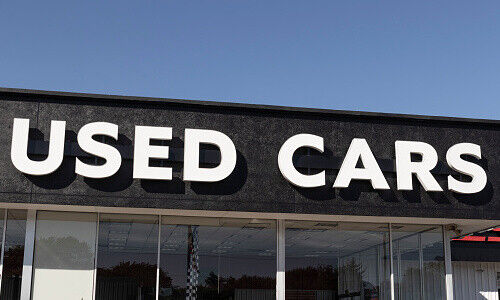At its last meeting, the Swiss National Bank raised its inflation forecasts for 2022, citing higher oil and import prices. Perhaps it should also look at used car prices for insights.
In raising its consumer price index (CPI) forecasts to 1.0 percent this year from 0.7 percent, the Swiss National Bank (SNB) cited «higher import prices, above all for oil products and for goods affected by global supply bottlenecks.»
This suggests the SNB is keeping an eye on imported inflation spilling over into consumer prices.
In fact, in each of its past four meetings, the SNB raised its inflation forecasts for 2022. Given recent price developments will they do so again in their next policy announcement on March 24, and if so by how much?
Last year, import prices increased 5.1 percent on an annual basis in contrast to a 5.6 percent contraction in 2020 and a drop of 2.5 percent in the year prior to that.
Now, the first results for 2022 are in. Prices for imported items are showing a 9.5 percent increase in January over the the same time a year ago, according to the Swiss statistics office. Petroleum products saw a nearly sixty percent annual price increase in January.
Excluding this and other volatile prices such as those for agricultural products, metals and gas, prices for imported goods were up a more more moderate 3.4 precent in January from a year ago.
It is an ironic paradox that on international markets petroleum prices are denominated in dollars, and a strong Swiss franc makes importing the fuel cheaper. But as the SNB repeated in its latest monetary policy statement, the franc «remains highly valued.»
Consumer Prices
Last Friday, the first results the consumer price index were announced, showing an annual increase of 1.6 percent in January.
The federal statistics office cited prices of second-hand automobiles as one of the contributors, rising ten percent in January from a year ago. This is likely reflecting higher demand due to supply chain constraints.
Still, this is well below the inflation rates in the U.S. and in the Euro area, giving the SNB some policy leeway barring a surge in the value of the Swiss franc against the euro, as finews.com, reported last week.
While the gap between import and consumer price growth is still rather wide, there are still many variables at play on inflation.
The banks inflation forecasts assume the SNB's policy rate remains at −0.75 percent over the entire forecast horizon.































